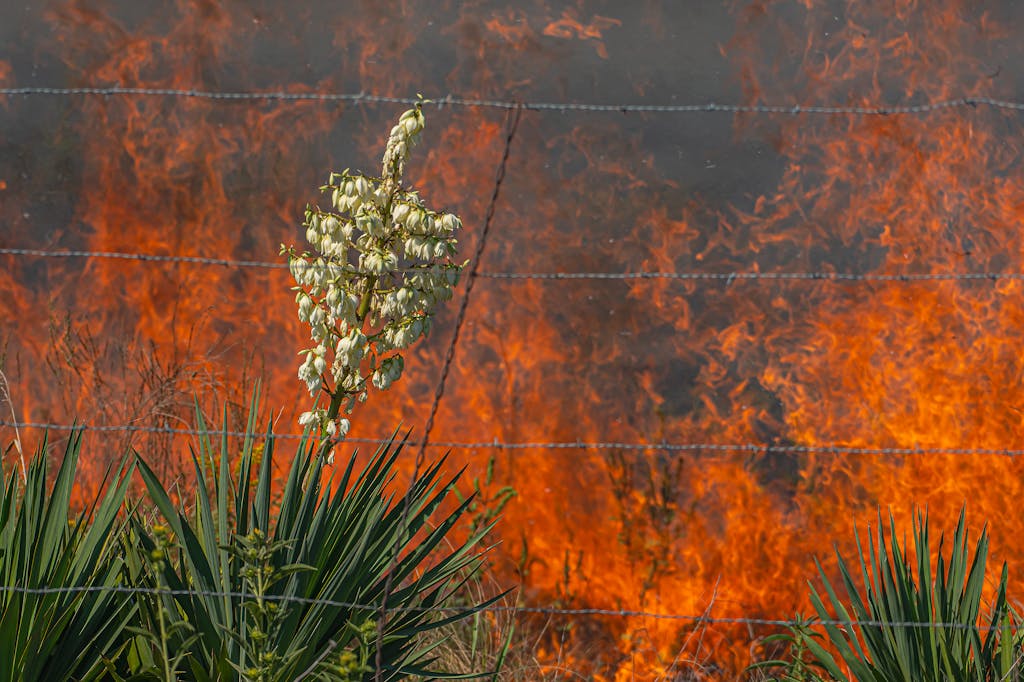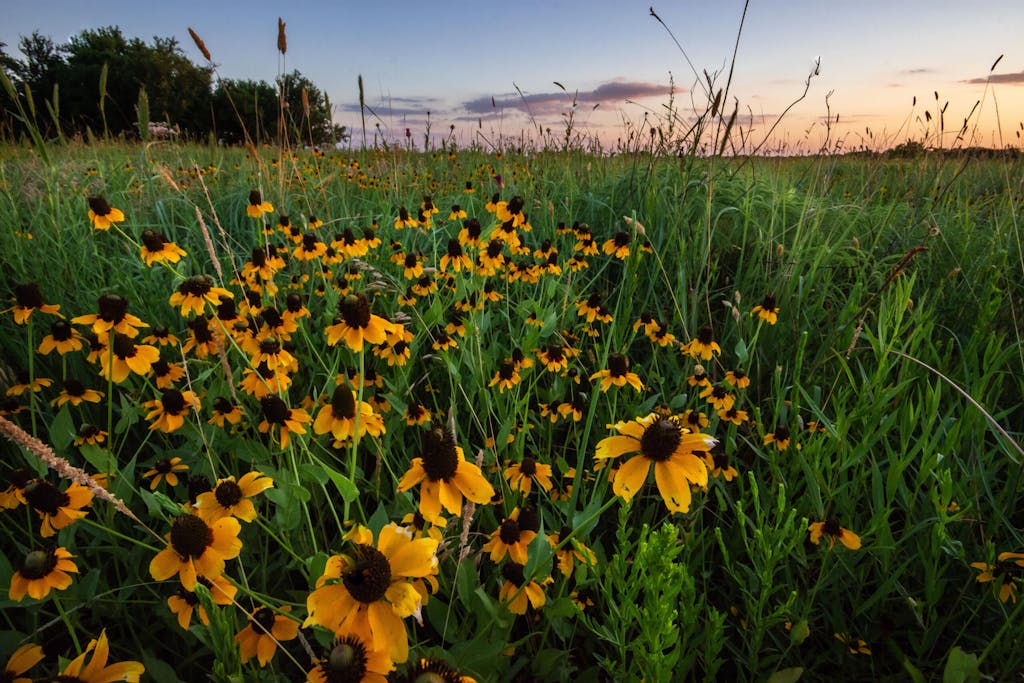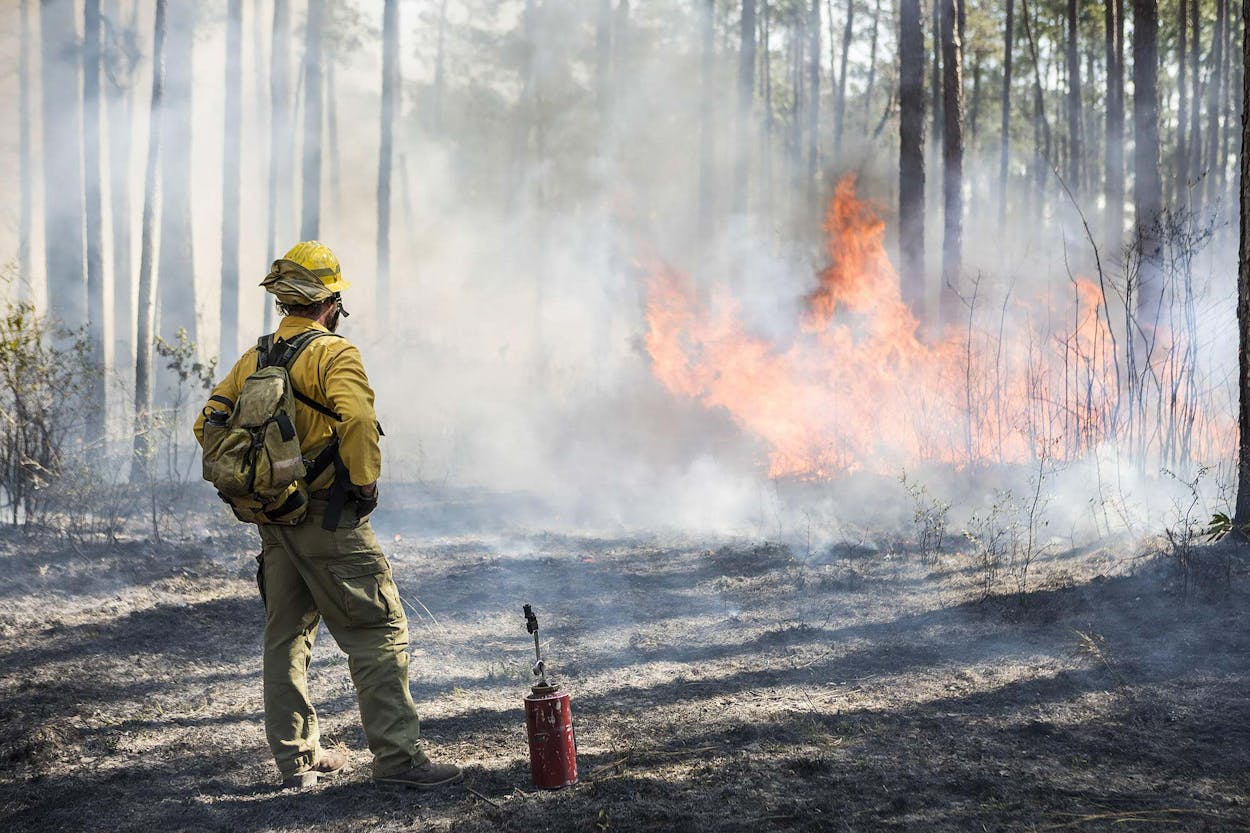In June 2022, a dozen crew members gathered alongside a rolling, green-gold meadow in North Texas, drip torches in hand. Their mission? Carefully burn a few hundred acres of The Nature Conservancy’s (TNC) Clymer Meadow Preserve, a rare remnant of never-been-plowed Blackland Prairie located about 60 miles northeast of Dallas.
The flames that swept across that lush, diverse swathe of meadow that day may have looked destructive. A plume of smoke rose from the ground and a rush of insects and rodents sped from the path of the oncoming fire. But the blaze, conducted under precise and controlled conditions, was part of a periodic regimen of prescribed burns that helps keep the land healthy.
Background
In the early 20th century, a series of catastrophic wildfires including the Big Burn, which killed at least 78 people and consumed 3 million acres in Idaho and Montana, prompted the federal government to adopt a full suppression model of fire management.
“Under the U.S. Forest Service, all fires were to be put out by 10 a.m. the next day,” says Luke Ball, fire manager for TNC in Texas. “When a fire started, they’d throw crews made up of firefighters, fire trucks, fire equipment, aircraft, and other resources to every wildland fire, no matter how remote.”
Then, starting in the 1940s, Smokey Bear lent his voice to the campaign. “Smokey Bear is one of most recognizable American emblems next to the Coke bottle, and everybody knows Smokey says fire is bad,” Ball says. “Most everyone today has grown up in an environment where fire is something to put out.”


The fire-is-bad policy worked at first, but eventually forests became overloaded with fuel. Then, when a natural fire did occur, it flamed up hotter and more intense than would have occurred naturally. The resulting blazes were devastating, destroying trees that had adapted to less intense burns, altering ecosystems, and impacting urban areas.
That’s the legacy we’re living with now in places like California. “Compounding that are the effects of climate change, with more extremes in drought and temperature, followed by major flooding events,” Ball says.
Fire in Texas
Fire has long been a natural part of the landscape in the Lone Star State. Before humans lived here, fires ignited by lightning periodically swept across the land. Ecosystems, whether towering forests or expansive meadows, adapted to depend on that disturbance. It helped them thrive.
“Historically those fires would consume the grass and timber litter and small shrubs growing under forests,” Ball said. “But we’ve taken natural fire out of most of the ecosystems in Texas that historically depended on it.”
To keep the environment healthy today, TNC works with government entities to periodically introduce fire in a controlled manner. These prescribed burns create the disturbance the ecosystem needs and helps reduce the intensity of unplanned fires.

The Nature Conservancy, which is part of the National Wildfire Coordinating Group, manages about 100,000 acres of land in Texas, and protects closer to a million acres when easements and other investments are factored in. Last year, it intentionally burned about 5,500 acres through fires designed by experts and executed under safe conditions. The wind, temperature, humidity, moisture of the vegetation, and conditions for smoke dispersal all must be just right before a fire is lit.
Crews use drip torches to ignite the downwind side of a target area. They then light the interior sections as needed. TNC crews work with state, federal, and municipal authorities, all of whom share the same training standards, to get the work done.
The Nature Conservancy in Texas has used fire as a land management tool in Texas since the 1970s, when the first prescribed burns took place at the Roy E. Larsen Sandyland Sanctuary near Beaumont, one of the last large remaining sections of longleaf pine in Texas. Now, crews intentionally burn parts of that preserve every 18 months to two years to stimulate grasses, forbs, and wildflowers in the longleaf pine forest.
Benefits of a Prescribed Burn
Whether it’s a pine forest or a prairie, the benefits of a burn become obvious almost immediately. “It’s really quite astonishing how quickly things grow,” says Brandon Belcher, manager of Clymer Meadow Preserve. “Fire clears vegetation or thatch that’s choking the ecosystem.”
Seeds can germinate on cleared patches of ground. More sunlight reaches that ground, spurring new growth. Animals move in to forage, spreading seeds. “We see this explosive growth in the next growing season,” Belcher says. “We see a huge inflorescence explosion across that landscape, sometimes within a day or a month. It’s all about renewed life.”

Fire also enriches the soil. “Fire cycles nutrients in a way we don’t normally think about. The leftover material, the ash and bio char, is nutrient-rich,” Belcher says. “Fire releases that and allows those nutrients to be used.” That means good grazing for animals and rich soils for plants.
Back at Clymer Meadow Preserve
Less than a year after the prescribed burn at Clymer Meadow, Belcher leads a group on a wildflower tour through the land. It’s a rare chance for the public to see the property, and it looks lush and healthy, a rippling green wave dotted with purple basket-flowers and yellow flowers of the rosinweed. Eastern kingbirds dip into the waist-high expanse, and bees and butterflies hover around the puffball-shaped blooms of a plant called the rattlesnake master.
“It’s a lot of eye candy and color,” Belcher says.

The regenerative results of the burn will linger for a few years, then it will be time to plan another burn on the same plot. “When we do our prescribed fires here, you realize fire is not a destructive force, it’s a regenerative force,” Ball says. “It’s going to burn. The question is do we burn it under our terms to meet our objective for a healthy landscape and safe relationship with humans or wait for it to burn on its own terms?”







